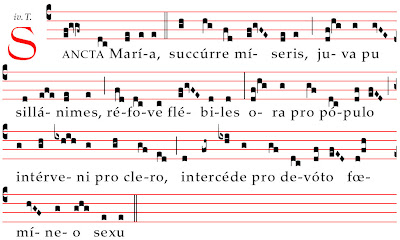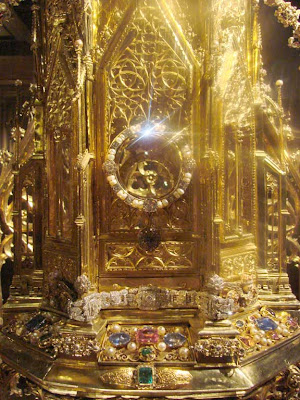 |
| Pious bric-a-brac. |
To many who are not Catholic and to some who are, the rosary, which we celebrate today, is perhaps the most ubiquitously offensive thing left in Catholicism. Today, we commemorate the victory of Lepanto, where tradition says thousands of people fingering beads hundreds and thousands of miles from the battle played a role as decisive as ships and cannons. That’s uncomfortably superstitious sounding stuff to the modern mind.
Other devotions went into eclipse as the fads and fashions of modernity stripped much of the material grounding from our religion, but the beads remained as comforting tokens and reminders of promises. The beads and the other sacramentals call us outside of ourselves and ground us. They have the salutary effect of reminding us that Catholicism is a religion of acts, not merely of thoughts and theological argument. They are a sign of contradiction in that they are material, and yet they remind us that the concerns of our religion can never be merely a program of material and human development. They speak at the deepest level of our humanity and, while derided for leading to superstition, their role in grounding us and protecting us from falling too far into our own intellectual fantasies and fancies is too often overlooked.
There is a tremendous hunger in the world for traditions of material religion that have been lost in the last 50 years. A trip to any national chain bookstore will offer the browser ten varieties of tarot decks, crystal kits, the I Ching, dream journals and catchers, and how-to books on making charms and talismans and the secrets of candle magic. But you probably won’t find a breviary, much less the Raccolta with its indulgenced prayers and acts. The world is buying, but for too long Christianity has stopped selling. Under Pope Benedict, it looked as if we might see the day when Barnes and Noble had an aisle crammed with St. Joseph home sale kits, votive candles, Miraculous Medals, prayer books, rosaries and all of the other things from which progress was to liberate us and yet our spirits still crave, but the new administration in Rome seems to be much more of the poster, book, and record variety.
As a former monk, I don’t have the devotion to the rosary that many others do. Monks believe that we will work out much of our salvation in the turning of pages rather than in the counting of beads. Those of us with a devotion to the Divine Office often make much of the difference between the glories of the Breviary and mere “devotions” like the rosary, but, stepping back, I think I probably have to admit that the distinction is lost on the outsider.
Even for all of the liturgical and aesthetic sobriety that marked life as a Cistercian, we still did a heavy business in material religion. We had a particular devotion to the Cult of the Relics and the Cult of the Dead, but sacramentals and other blessed objects also grounded the life of the house throughout the year. The Church year began with the advent wreath in the refectory. At Epiphany, we blessed salt, water, and chalk and blessed the house. At Candlemas, there was the blessing of candles, followed closely by the blessing of throats on St. Blaise’s Day. On St. Agatha’s Day, we blessed bread. On Ash Wednesday, there was the imposition of blessed ashes. At Easter, we blessed fire and water then eggs and food. At Assumption, we blessed herbs. On St. Francis Day there was one blessing of animals, followed by the blessing of the horses on Martinmas. At professions we blessed habits, cappas, and cowls. Each day ended with being aspersed with holy water by the prior after Compline. Rather than standing in opposition, these were the things that balanced and give ballast to the hours spent in lectio divina and mental prayer that most people find much more palatable.
In the wider world, the Rosary has survived. Ultimately, I think that can be attributed to Our Lady, but proximately it was often thanks to the determination of Saturday morning sodalities of feisty, pious old ladies, whom even the most renewed pastor was hoping to outlive rather than have to tangle with. And, after all, it was something that they could do on their own. But they and their beads didn’t die. The beads carried the Church through the worst of the storm. And so today, give thanks to Our Lady of the Rosary and also for feisty old ladies who may well have carried the day, just as they did at Lepanto.























